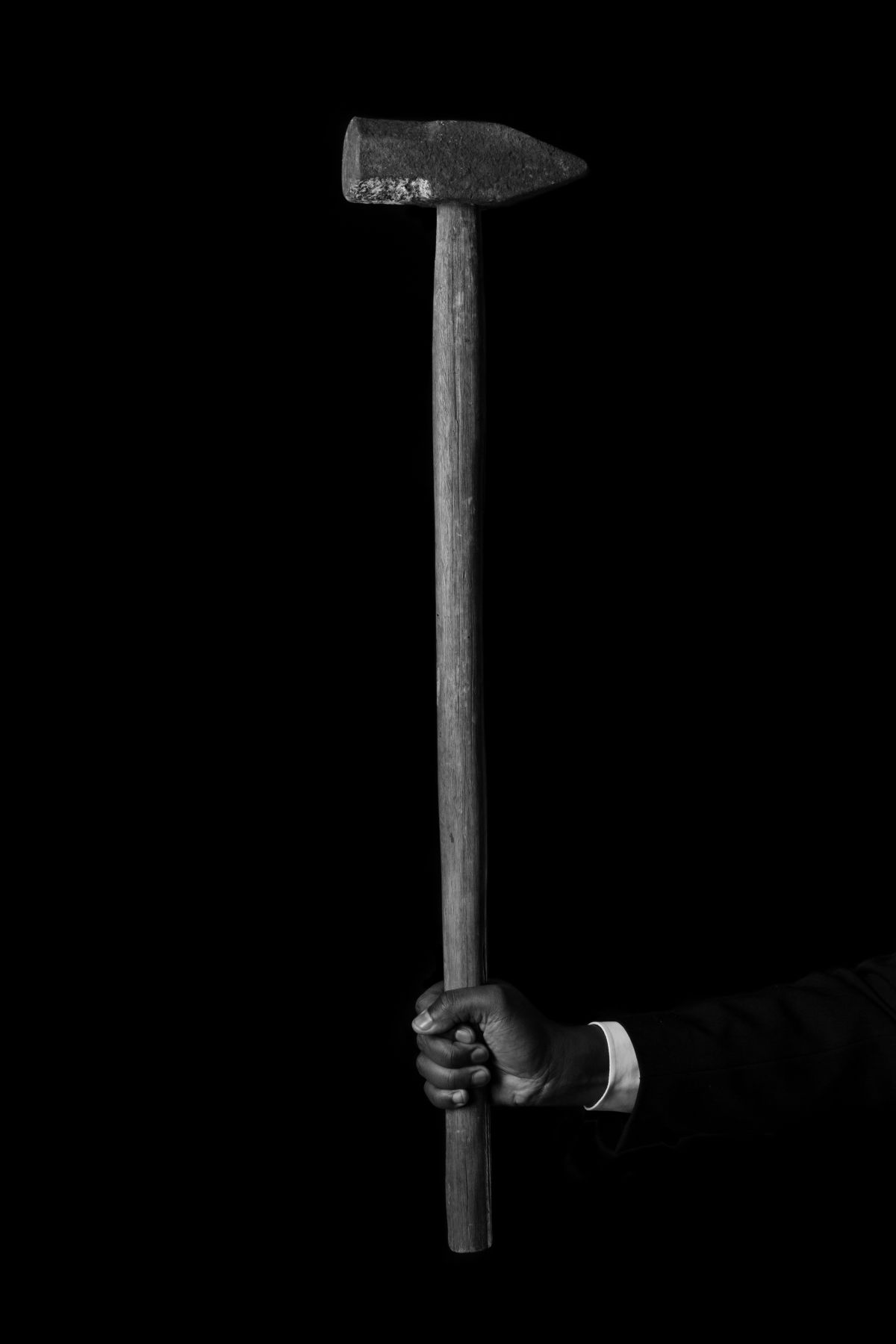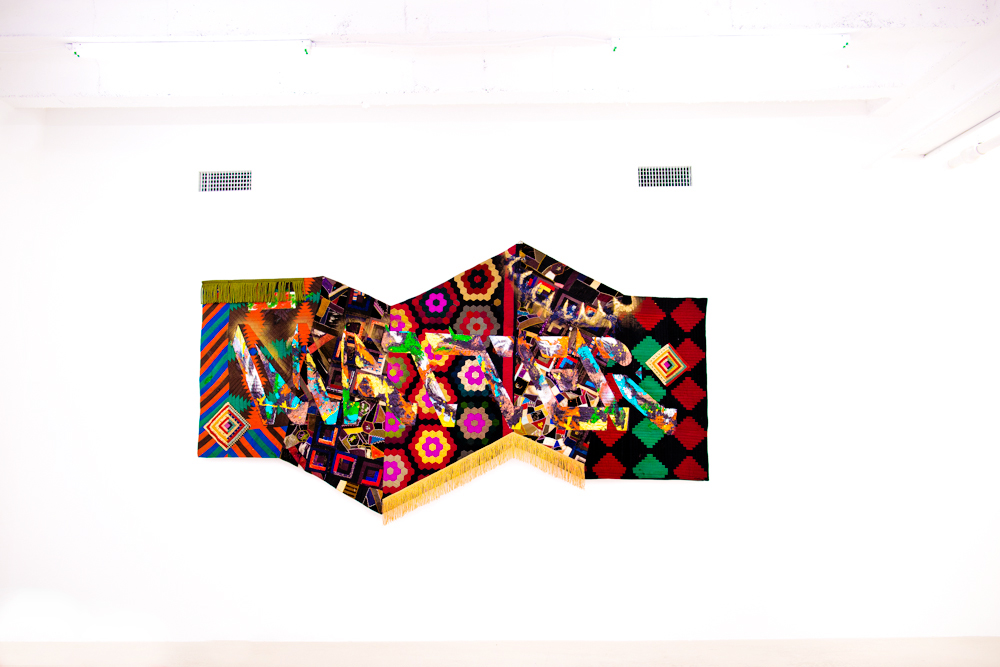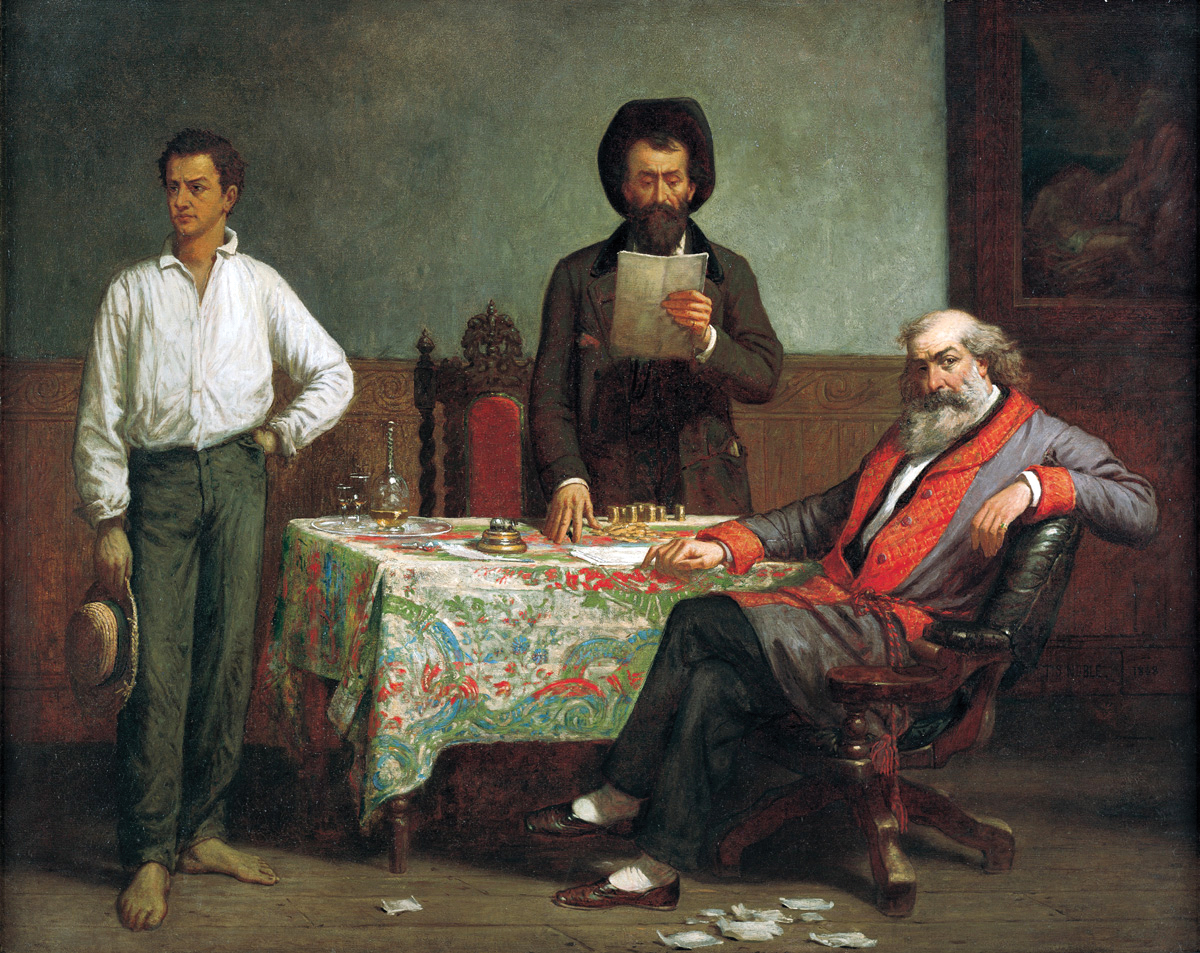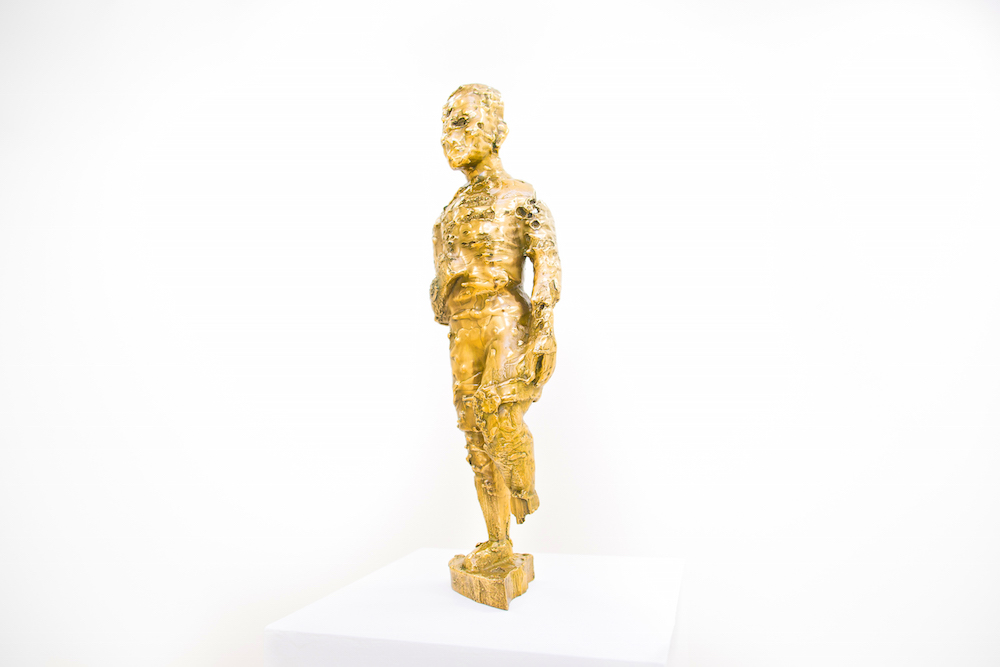
Sheldon Scott. Self Portrait as John Henry (Hammer), 2014. C-print on archival paper, 38 x 26 inches, ed: 10. Courtesy of the artist and Connersmith Gallery.
In the spring of 2015, I curated a show with my partner, Deirdre Darden. It was an all-white artist response to the Black Lives Matter movement, called Black Lives/White Light. The open call asked for white artists to create or submit work that spoke to the preservation and protection of black lives, as they understood it. The concept struck many as offensive and prompted a lot of questions about the motivation for centering white voices regarding this issue. But I knew that, long before Black Lives Matter was a hashtag, generations of black and non-black artists have been making work about the challenges of blackness in this country. In other words, before the offended people had found themselves enlightened with new awareness of the realities of being black, artists worked with those themes. I wanted to survey the ways in which new white voices could engage this human-rights movement.
Later that year I found another show that examined the same movement, this time through the lens of blackness, deep amid the email announcements for events during Art Basel Miami Beach. It was a link to a video about the opening of Sanford Biggers’ show, Matter, at the David Castillo Gallery. It was the kind of email that forces me to rearrange my agenda, possibly flake out on friends, miss an opportunity to network, or pass up the chance to enjoy a top-tier open bar. It was one of those “have-to” things you didn’t plan for. The video referenced an episode of Fat Albert, in which the animated protagonist is approached and ultimately shot by police officers. It then showed a plastic inflated figure of Fat Albert lying face down, arms at his side, evoking Michael Brown’s body on that hot August day in 2014. Other works in the show are BAM, a bronze statue with a companion video that depicts the sculpture being pelted and parts of the body flying off, and Matter, a quilt that directly refers to Black Lives Matter—a movement that has brought about, among many things, a new consciousness that strongly affects the way art is viewed and created.

Sanford Biggers. Matter, 2015. Antique quilts, oil stick, spray paint, fabrics, acrylic, tar, glitter, and silkscreen, 120 x 48 inches. Courtesy of David Castillo Gallery.
Throughout the landscape of American black liberation, from the anti-slavery actions of the nineteenth century, to the civil rights campaigns of the 1950s and ’60s, to #blacklivesmatter, one sees the same sentiments expressed, but the current movement has a tremendously effective aggregate and a global reach as seen in Black Lives/White Light and Bigger’s Matter. Historically, white artists had to speak for oppressed blacks who couldn’t do so for themselves.
In speaking with American art historian and curator, Tuliza Fleming, I learned how American artists, both black and white, have historically addressed issues of racially-based violence and oppression in their art. For example, the artist Thomas Satterwhite Noble—a white, anti-slavery, Confederate captain—created works like the contested The Modern Medea (1867) and The Price Of Blood (1868) that documented the horrors of slavery and its tyranny over families. Harry Sternberg, another white artist, created Southern Holiday in 1935, a time when blacks pushed to tell their own stories but still faced potentially dire consequences for producing works that challenged racism; they found ways to speak through the anti-lynching initiatives of the NAACP and leftist groups. There were works by bold black artists during that era as well like, Aaron Douglas’s Crucifixion (1927) depicting the era of Jim Crow with its burdened and lynched black bodies. In the 1960s and ’70s, black artists like Jon Onye Lockard, Betye Saar, and Dana Chandler found ways to challenge viewers who were new to the works and vocabularies of black artists. But that did not and does not relieve white voices of responsibility in this human rights movement.

Thomas Satterwhite Noble. The Price of Blood, 1868. Oil on canvas. Courtesy of Morris Museum of Art, Augusta, Georgia.
Now that we know the movement existed in art for some time, and we have this platform that has become an anti-black-racism and human-rights movement on a global scale, what is our responsibility as audience and artist? Audiences should stop wanting to freeze the content and context of black art, to view the atrocities of race in this country from a safe, historical perspective. And artists will continue to challenge ourselves to make work that further pushes the dialogue of race in this country. Biggers’ Matter does just that. Even though it referenced a ’70’s cartoon show, when I looked at it, I knew I was looking looked at now.

Sanford Biggers. BAM, 2015. Bronze, 19 x 6 x 4 inches. Courtesy of David Castillo Gallery.



